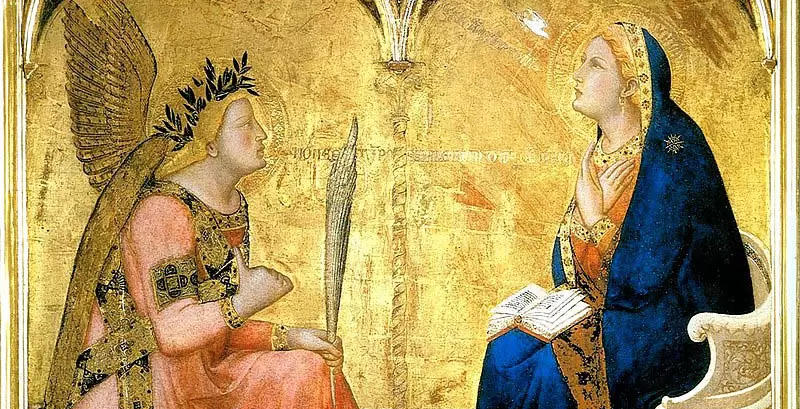
By Staff Reporter
Ambrogio Lorenzetti (Siena, ca. 1290 – Siena, 1348) was an Italian painter of the Sienese school. He was active between approximately from 1317 to 1348. Ambrogio Lorenzetti died from a plague in 1348.

After the departure of Simone Martini to Avignon in 1336, Ambrogio established a workshop in Siena. His elder brother was the painter Pietro Lorenzetti. They were the first Sienese to adopt the dramatic quality of the Tuscan sculptor Giovanni Pisano and the naturalistic approach of the Florentine painter Giotto. In their experiments with three-dimensional, spatial arrangements, the brothers, particularly Ambrogio, foreshadowed the art of the Renaissance. Ambrogio, more realistic, inventive, and influential than Pietro, is best known for the fresco cycles Good Government and Bad Government (1338-39, Palazzo Publico, Siena), remarkable for their depiction of character and of the Sienese scene. He also painted Presentation in the Temple (1342, Uffizi, Florence) and Annunciation (1344, Pinacoteca, Siena). His work includes also the altarpiece Madonna and Child with Saints (1320, Santa Maria Della Pieve, Arezzo), dramatic frescoes in the lower Church of San Francisco in Assisi, and the Birth of the Virgin (C. 1342, Opera del Duomo, Siena).
The peaceful and gently lyrical temperament of Ambrogio Lorenzetti is in complete contrast to bis brother’s fiery and often intensely dramatic spirit. Vasari did not realize that the two were related, and wrote of Ambrogio that bis manners “were. .. more those of a gentleman and philosopher than those of an artist,” and he speaks about his love of literature and bis intellectual acumen, qualities that enabled him to turn bis hand both to sacred painting and to historical, allegorical and other “profane” themes, to pick up hints from classical antiquity and from the fabled Orient, to be a cosmographer and cartographer, and above all to bring profundity and boldness of ideas to bis work, and to revolutionize accepted notions of iconography.[1]
Annunciation

The Annunciation (1344). In this late and highly finished work Ambrogio abandons his usual earthy depiction of realistic and human detail in favour of emphasizing the almost Gothic elegance of the two characters. They face each other across a floor that is, however, painted in rigorous perspective. The signed and dated painting was executed in 1344 for the City Council of Siena.The Annunciation is one of the five signed and dated works of Lorenzetti, the last in chronological order, and therefore a valid reference point for the dating of the remaining works attributed to this artist. Ambrogio Lorenzetti’s Annunciation (…) has been justly acclaimed by contemporary scholars as one of his finest creations. It has also received a fair amount of criticism. In particular, scholars have faulted the heaviness of the figures, the awkwardness of Gabriel’s gesture, and his diminutive extended wings, which have been roundly condemned as a crude restoration.[6]
Allegory and Effects of Good and Bad Government
The Allegory of Good and Bad Government is a series of three fresco panels painted by Ambrogio Lorenzetti between February 1338 and May 1339. The paintings are located in Siena’s Palazzo Pubblico—specifically in the Sala dei Nove (“Salon of Nine”), the council hall of the Republic of Siena’s nine executive magistrates, elected officials who performed executive functions (and judicial ones in secular matters). The paintings have been construed as being “designed to remind the Nine [magistrates] of just how much was at stake as they made their decisions”.Considered Lorenzetti’s “undisputed masterpiece”,
the series consists of six different scenes (the titles are all modern conveniences)
The Allegory of Good Government carries a strong social message of the value of the stable republican government of Siena. It combines elements of secular life with references to the importance of religion in the city at the time. While classified as medieval or proto (pre)-renaissance art, these paintings show a transition in thought and an evolution in theme from earlier religious art.

The Allegory of Good Government depicts the personification of Justice as a woman. She gestures to the scales of balance, held by the personifcation of Wisdom floating over her throne. On the viewer’s left, a convicted criminal is beheaded; on the right, figures receive the rewards of justice. At Justice’s feet, the personification of Virtue, also, unusually for the time, portrayed as a female figure, passes virtue among twenty four faithfully rendered and recognizable images of prominent male citizens of Siena. The men face towards the largest figure in the image, a judge located in the center right. The judge is surrounded by additional personifications including Peace, who is represented as a fashionable, white-clad contemporary female figure with elaborate blonde hair. (Then as now, blonde hair was fashionable and seldom entirely natural; it was not the dominant natural hair color for Italian women from this region, and it was common for women to lighten their hair by streaking it with urine and heating it in the sun.)
The allegory carries a strong social message of the value of the stable republican government of Siena. It combines elements of secular life with references to the importance of religion in the city at the time. The figure of Justice resembles the figure of Mary, Queen of Heaven, the patron saint of Siena, on a throne. The Judge reflects the tradition in the Christian Last Judgment to have God or Christ judging the saved on the left; the damned on the right. While classified as medieval or proto (pre)-renaissance art, these paintings show a transition in thought and an evolution in theme from earlier religious art.
Flanking the Allegory are two other paintings on perpendicular walls: Effects of Good Government and Effects of Bad Government. Both these frescoes depict a recognizable view of Siena and its countryside.
In the allegorical representation of Good Government, the prosperous townspeople are trading and dancing in the streets. Beyond the city walls is a lush countryside in which crops are harvested.
In the allegory of Bad Government, crime is rampant and diseased citizens roam a crumbling city. The countryside suffers from drought.

Lorenzetti’s The Effects of Bad Government fresco has not been written on as extensively as The Effects of Good Government, partly due to the worse condition of this fresco. The wall on which the fresco of The Effects of Bad Government is depicted used to be an exterior wall, so has suffered much moisture damage in the past.

Allegory of the Good Government, fresco in the Palazzo Pubblico, Siena
Ambrogio Lorenzetti frescoed the side walls of the Council Room (Sala dei Nove) of the City Hall, the Palazzo Pubblico, of Siena. The subject of the frescoes are the Good and Bad Government and their effects on the life of the cities and villages.
The Allegory of the Good Government is situated on the smaller wall opposite to the windows. The composition is built up from three horizontal bands. In the foreground the figures of contemporary Siena are represented. Behind them, on a stage, there are allegoric figures in two groups, representing the Good Government. The two groups are connected by the procession of the councillors. The upper band indicates the heavenly sphere with the floating bodyless ghosts of the virtues.
The enthroned man on the right side of the middle band represents the city of Siena and embodies the Good Government. Around his head the four letters C S C V (Commune Saenorum Civitatis Virginis) explain his identity. At his feet the two plating children are the sons of Remus, Ascius and Senius, the founders of Siena according to the Roman legends. On both sides of Siena the virtues of Good Government are represented by six crowned, stately female figures: Peace, Fortitude and Prudence on the left, Magnanimity, Temperance and Justice on the right. On the far left of the fresco the figure of Justice is repeated as she is balancing the scales held by Wisdom.

The Effect of the Good Goverment is situated on the longer wall of the room. This panoramic fresco represents several scenes indicating the life of Siena and its environment in the 14th century. This detail shows the centre of the city. In the middle the dancing young women probably represent the nine Muses. There are several genre like scenes in the picture (shops, chatting men, riders, working men on the roof etc.)
Bad Government and the Effects of Bad Government on the City Life
On the wall opposite the Effect of Good Government and to the left of the Good Government Ambrogio painted another fresco called Bad Government and the Effects of Bad Government on the City Life, which uses the same forms and compositional devices as the other frescoes in the room, but inverts them. The malevolent-looking figure representing Bad Government, pointedly labeled as Tyranny, is enthroned and stares hieratically out at the observer.. Neither male nor female, it is fanged, cross-eyed, and porcine, clearly bloated with corruption. In place of the cardinal virtues, personifications of Avarice, Pride, and Vainglory fly over its head. Tyranny is flanked by clearly labeled seated figures representing Cruelty, Treason, and Fraud at the left, and Frenzy, Divisiveness, and War at the right. A bound figure representing Justice lies at its feet. The city to its left is falling into ruin, robbers roam the streets, and, in the foreground, a group of ruffians drags a woman by her hair. Even in its now ruinous condition the image conveys a dire warning.

In the hilly countryside the only activities are ones of death and destruction, setting fire to isolated houses and whole villages. The countryside is bare and barren, the trees bear no fruit and no one is cultivating the land.
The Allegory of the Bad Goverment is situated on the wall opposite to Allegory of Good Government. At the centre of the dais sits Tyrannia, with the appearence of a demon, with horns and fangs. The figure of Tyranny has flowing woman’s hair, a cloak with gold embroidery and precious stones, a gold cup in her hand and a goat, the traditional symbol of lust, at her feet. Below is the vanquised Justitia: the scales are broken and scattered around her on the ground. Around Tyranny’s throne are gathered the Vices.
Ambrogio Lorenzetti, Madonna with Angels and Saints (Maestà)

The Museum of Sacred Art, organised within the museum complex of San Pietro all’Orto in Massa Marittima, houses one of the most well-known Italian paintings from the Middle Ages: the Maestà by Ambrogio Lorenzetti, one of the greatest interpreters of 14th-century Sienese painting. Ambrogio Lorenzetti followed the examples of the Maestà representations by both Duccio and Simone Martini.
This masterpiece was created during the mature years of the painter, who united a vibrant feeling of maternal love with customary medieval symbols, particularly in the pose of the Madonna, who is about to seal her deep bond to the Child with a kiss. The Madonna is seated on an original throne composed of the outspread wings of two angels. The throne is set on the last of three steps, upon which are sitting personifications of the three theological virtues. The figures represent: Faith in white, Hope in green and Charity in red.

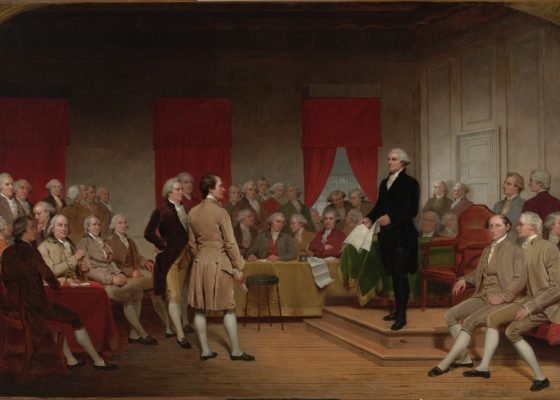
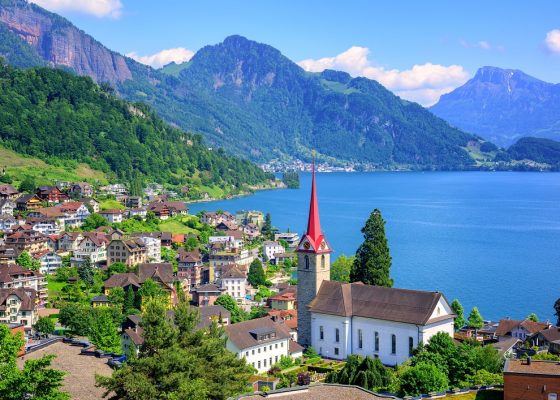

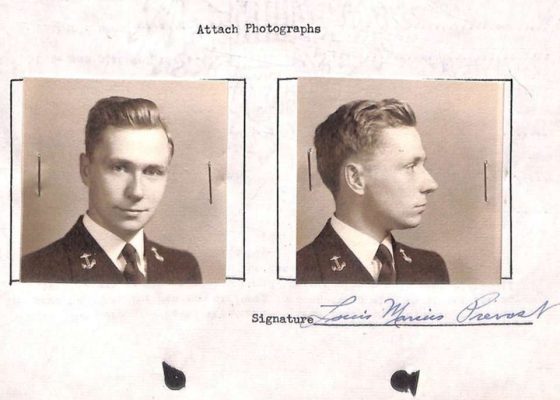
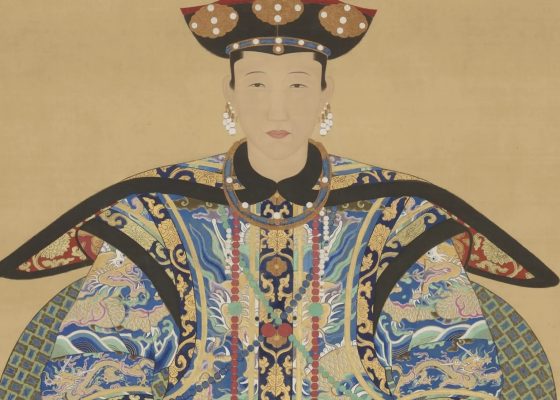


Cancel anytime


Using our website
You may use the The Middle Land website subject to the Terms and Conditions set out on this page. Visit this page regularly to check the latest Terms and Conditions. Access and use of this site constitutes your acceptance of the Terms and Conditions in-force at the time of use.
Intellectual property
Names, images and logos displayed on this site that identify The Middle Land are the intellectual property of New San Cai Inc. Copying any of this material is not permitted without prior written approval from the owner of the relevant intellectual property rights.
Requests for such approval should be directed to the competition committee.
Please provide details of your intended use of the relevant material and include your contact details including name, address, telephone number, fax number and email.
Linking policy
You do not have to ask permission to link directly to pages hosted on this website. However, we do not permit our pages to be loaded directly into frames on your website. Our pages must load into the user’s entire window.
The Middle Land is not responsible for the contents or reliability of any site to which it is hyperlinked and does not necessarily endorse the views expressed within them. Linking to or from this site should not be taken as endorsement of any kind. We cannot guarantee that these links will work all the time and have no control over the availability of the linked pages.
Submissions
All information, data, text, graphics or any other materials whatsoever uploaded or transmitted by you is your sole responsibility. This means that you are entirely responsible for all content you upload, post, email or otherwise transmit to the The Middle Land website.
Virus protection
We make every effort to check and test material at all stages of production. It is always recommended to run an anti-virus program on all material downloaded from the Internet. We cannot accept any responsibility for any loss, disruption or damage to your data or computer system, which may occur while using material derived from this website.
Disclaimer
The website is provided ‘as is’, without any representation or endorsement made, and without warranty of any kind whether express or implied.
Your use of any information or materials on this website is entirely at your own risk, for which we shall not be liable. It is your responsibility to ensure any products, services or information available through this website meet your specific requirements.
We do not warrant the operation of this site will be uninterrupted or error free, that defects will be corrected, or that this site or the server that makes it available are free of viruses or represent the full functionality, accuracy and reliability of the materials. In no event will we be liable for any loss or damage including, without limitation, loss of profits, indirect or consequential loss or damage, or any loss or damages whatsoever arising from the use, or loss of data, arising out of – or in connection with – the use of this website.
Last Updated: September 11, 2024
New San Cai Inc. (hereinafter “The Middle Land,” “we,” “us,” or “our”) owns and operates www.themiddleland.com, its affiliated websites and applications (our “Sites”), and provides related products, services, newsletters, and other offerings (together with the Sites, our “Services”) to art lovers and visitors around the world.
This Privacy Policy (the “Policy”) is intended to provide you with information on how we collect, use, and share your personal data. We process personal data from visitors of our Sites, users of our Services, readers or bloggers (collectively, “you” or “your”). Personal data is any information about you. This Policy also describes your choices regarding use, access, and correction of your personal information.
If after reading this Policy you have additional questions or would like further information, please email at middleland@protonmail.com.
PERSONAL DATA WE COLLECT AND HOW WE USE IT
We collect and process personal data only for lawful reasons, such as our legitimate business interests, your consent, or to fulfill our legal or contractual obligations.
Information You Provide to Us
Most of the information Join Talents collects is provided by you voluntarily while using our Services. We do not request highly sensitive data, such as health or medical information, racial or ethnic origin, political opinions, religious or philosophical beliefs, trade union membership, etc. and we ask that you refrain from sending us any such information.
Here are the types of personal data that you voluntarily provide to us:
As a registered users or customers, you may ask us to review or retrieve emails sent to your business. We will access these emails to provide these services for you.
We use the personal data you provide to us for the following business purposes:
Information Obtained from Third-Party Sources
We collect and publish biographical and other information about users, which we use to promote the articles and our bloggers who use our sites. If you provide personal information about others, or if others give us your information, we will only use that information for the specific reason for which it was provided.
Information We Collect by Automated Means
Log Files
The site uses your IP address to help diagnose server problems, and to administer our website. We use your IP addresses to analyze trends and gather broad demographic information for aggregate use.
Every time you access our Site, some data is temporarily stored and processed in a log file, such as your IP addresses, the browser types, the operating systems, the recalled page, or the date and time of the recall. This data is only evaluated for statistical purposes, such as to help us diagnose problems with our servers, to administer our sites, or to improve our Services.
Do Not Track
Your browser or device may include “Do Not Track” functionality. Our information collection and disclosure practices, and the choices that we provide to customers, will continue to operate as described in this Privacy Policy, whether or not a “Do Not Track” signal is received.
HOW WE SHARE YOUR INFORMATION
We may share your personal data with third parties only in the ways that are described in this Privacy Policy. We do not sell, rent, or lease your personal data to third parties, and We does not transfer your personal data to third parties for their direct marketing purposes.
We may share your personal data with third parties as follows:
There may be other instances where we share your personal data with third parties based on your consent.
HOW WE STORE AND SECURE YOUR INFORMATION
We retain your information for as long as your account is active or as needed to provide you Services. If you wish to cancel your account, please contact us middleland@protonmail.com. We will retain and use your personal data as necessary to comply with legal obligations, resolve disputes, and enforce our agreements.
All you and our data are stored in the server in the United States, we do not sales or transfer your personal data to the third party. All information you provide is stored on a secure server, and we generally accepted industry standards to protect the personal data we process both during transmission and once received.
YOUR RIGHTS/OPT OUT
You may correct, update, amend, delete/remove, or deactivate your account and personal data by making the change on your Blog on www.themiddleland.com or by emailing middleland@protonmail.com. We will respond to your request within a reasonable timeframe.
You may choose to stop receiving Join Talents newsletters or marketing emails at any time by following the unsubscribe instructions included in those communications, or you can email us at middleland@protonmail.com
LINKS TO OTHER WEBSITES
The Middle Land include links to other websites whose privacy practices may differ from that of ours. If you submit personal data to any of those sites, your information is governed by their privacy statements. We encourage you to carefully read the Privacy Policy of any website you visit.
NOTE TO PARENTS OR GUARDIANS
Our Services are not intended for use by children, and we do not knowingly or intentionally solicit data from or market to children under the age of 18. We reserve the right to delete the child’s information and the child’s registration on the Sites.
PRIVACY POLICY CHANGES
We may update this Privacy Policy to reflect changes to our personal data processing practices. If any material changes are made, we will notify you on the Sites prior to the change becoming effective. You are encouraged to periodically review this Policy.
HOW TO CONTACT US
If you have any questions about our Privacy Policy, please email middleland@protonmail.com
The Michelin brothers created the guide, which included information like maps, car mechanics listings, hotels and petrol stations across France to spur demand.
The guide began to award stars to fine dining restaurants in 1926.
At first, they offered just one star, the concept was expanded in 1931 to include one, two and three stars. One star establishments represent a “very good restaurant in its category”. Two honour “excellent cooking, worth a detour” and three reward “exceptional cuisine, worth a
Thank you for your participation,
please Log in or Sign up to Vote
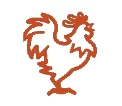
123Sign in to your account
Report: Trump Claimed He Threatened to Bomb Moscow and Beijing Over Ukraine and Taiwan